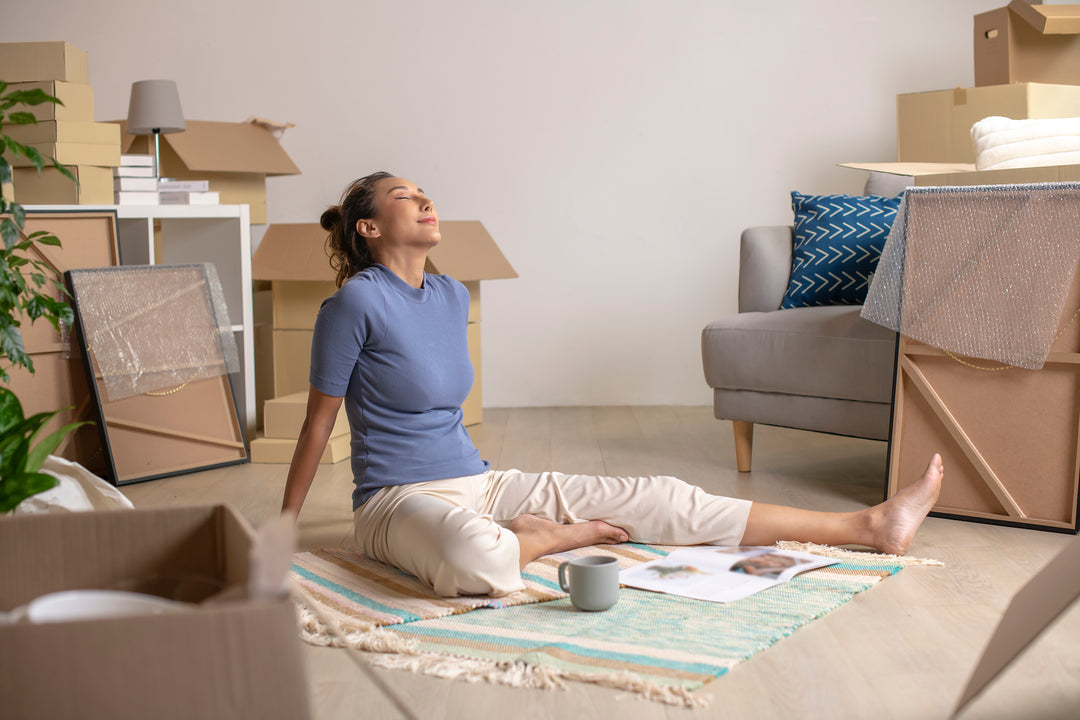Anxiety and Older Adults - Part 1 of a 6 part series
Anxiety and Older Adults
What is Anxiety?
By Darrell Griffin and the staff of PureAudacity.com
Part 1 of a 6 part series
Don't Worry, be Happy!
Anxiety disorders are more common in older adults than depression, yet they are frequently overlooked because of a focus on depression and dementia in older adults, * according to the American Journal of Geriatric Psychiatry.
It is also important to note that many older adults who experience anxiety had an anxiety disorder when they were younger (perhaps not diagnosed or treated). Like depression, anxiety disorders are frequently misdiagnosed and untreated in older adults. Anxiety is found in older adults at higher rates than depression and cognitive disorders. Sub-syndromic anxiety is more common than depression and cognitive disorders.
A person who has co-occurring disorders (one or more co-occurring medical problems) may have increased anxiety when the other symptoms occur. Untreated anxiety may result in cognitive impairment, disability, poor physical health, and poor quality of life. For older adults, depression often goes hand in hand with anxiety, and the two may debilitate one another, decreasing
health and overall quality of life. Anxiety may impair the older adult's physical health, reduce his or her ability to engage in everyday activities, and reducehis or her sense of wellbeing. Older adults and their families need to know that changes in health also bring on anxiety.
Anxiety, which can disrupt everyday living, is not normal in the process of aging, and it may contribute to increased health problems. Excessive worrying, which causes discomfort or interferes with everyday activities, is not a normal part of aging and can lead to various health problems and decreased functioning in everyday life. This type of anxiety causes racing thoughts, constant worrying, and feelings of despair. Anxiety disorders produce feelings

of fear, anxiety, worry, anxiety, or dread that are excessive or out of proportion to the issue or situation being feared.
Dealing with Anxiety
Anxiety disorders often occur together with other physical or mental health conditions, including alcohol or substance abuse, which can mask symptoms or worsen symptoms. Among adults, anxiety is the most common mental health issue among women, and second-most common for men, behind substance
abuse. Generalized anxiety disorders have grown in prevalence in older adults: In fact, approximately 20% of older adults have a diagnosable mental health condition. Generalized anxiety disorder (GAD) is the most common anxiety disorder among older adults, although anxiety disorders in this population are often related to traumatic events, such as falling down or being sick.
According to mental health experts, over 27% of older adults who are under the care of a senior services provider experience symptoms of anxiety that may not add up to a disorder diagnosis, but that substantially affect their functioning. Some older adults may not seek care because they have experienced symptoms of anxiety most of their lives and think these feelings are
normal.
Older adults are more likely to mention their physical symptoms than mental or emotional symptoms. This is thought to be due to older patients being less likely to mention mental symptoms, and more likely to highlight their physical complaints. Many older adults are at risk for developing mental health issues, such as anxiety and/or depression, neurological disorders,
or substance use problems, and other medical conditions, such as diabetes, hearing loss, and osteoarthritis. While primary depression and mood disorders mostly affect younger adults, older adults who experience symptoms of depression frequently arise from health problems, bereavement, and a loss of social contact. Older adults with chronic pain are frequently at risk
of misusing prescription medications; chemical dependence is a primary risk factor for anxiety, mood, and sudden personality
changes. Older adults managing anxiety experience greater difficulties in everyday living, and are at increased risk of
physical illness, falls, depression, disability, social isolation, and early death,* according to Social Work Today.
Anxiety can be a significant issue for older adults, which may impact on both physical and mental wellbeing. If left untreated, symptoms of anxiety may worsen, and the senior may experience compromised immunity, muscle tension, elevated blood sugar, fatigue in the nervous system, digestive issues, ulcers, cardiovascular problems, and breathing difficulties, among a number of other health complications and possibilities. Stress, fatigue, and feeling like you are not in control may all cause symptoms of anxiety. Being irritable, prone to anxiety, having trouble sleeping, and withdrawal from others can be symptoms of anxiety. Common symptoms include nightmares, flashbacks, feeling emotionless, depressed, being easily startled, and feeling angry, irritable, or distractible. Some common symptoms of an anxiety problem in older adults include irrational, excessive worrying or fear; checking again for safety; avoiding normal activities; avoiding social situations; racing heart; shallow breathing, shaking, nausea, and sweating.
Feelings of anxiety or nervousness are common for adults as well as children. In older adults, lack of sleep may exacerbate anxious feelings, but anxiety may also make it harder to get enough sleep. Diagnosing anxiety in dementia patients can be exceptionally challenging as well. Both depression and anxiety can contribute to mood changes, physical exhaustion, and lack of interest in activities of daily living. The stresses and changes that sometimes accompany growing older--poorer health, memory problems, and loss--can trigger an anxiety disorder. When anxiety occurs more frequently, is out-of-proportion to stressors, and interrupts the aging adults experiences and quality of life, anxiety becomes a severe disorder that must be treated with extreme care. As life expectancy continues to grow for the ageing population, it is important to be aware of signs and symptoms of anxiety, methods by which it can be treated, and what loved ones can do to help manage the many transitions in aging. The symptoms of anxiety in older adults are not always so apparent, because they often develop gradually, and given that we all feel a little anxious at some point, it can be difficult to know just how much is too much. Whether the older person has an anxiety disorder or is having trouble dealing with the aging process, family members may sometimes feel like a dramatic, sudden change has occurred in the behavior or personality of their loved one. Anxiety is
fairly common among older adults, out of all of the disorders in the elderly population.
Anxiety is basically worry that never stops. Its symptoms can be severe or mild, and include emotional, physical, and/or psychological manifestations. Here are some of the symptoms and possible causes of anxiety.
Symptoms and Manifestations
-Abdominal Problems
Anxiety can cause pain in your abdomen. Anxiety can also cause nausea, vomiting, and/or diarrhea. Have you ever had "butterflies in your stomach"? This refers to the fluttery feeling you get in your middle when you're nervous. This is caused by the "flight or fight" response, during which the body decreases circulation to non-vital body processes such as digestion. This allows your body to go into full alert, able to run or fight as the case may be. When this is prolonged, however, the digestive organs become worn out and, without the return of normal circulation, begin to malfunction.
-Muscle Tension
This can cause pain throughout the body, the most frightening being the chest tightness in a "panic attack." (Panic attacks are also symptoms of anxiety.) The muscle spasms can feel like you're choking or like a heart attack, increasing feelings of fear and anxiety.
-Phobias
Phobias are irrational fears of harmless or specific things. Fear of heights, spiders, or flying in airplanes are some of the more common phobias.
-Obsessive-Compulsive Disorder (OCD)
People with OCD feel the need to enact some sort of ritual to alleviate anxious feelings. Probably the most well-known example is obsessive hand-washing, but OCD can also involve other ritualistic behavior, such as checking all the doors and windows multiple times to see that they are locked, even when you just locked them.
-Headaches
Probably a result of muscle tension or chemical imbalance in the brain, headaches often are part of anxiety.
-Heart Palpitations
This is when the heart seems to flutter or beat rapidly and irregularly. Like the butterflies in the stomach, heart palpitations are part of the fight or flight response, only in the case of anxiety it's chronic.
-Restlessness/Insomnia
People with anxiety often have trouble relaxing in general and sleeping in particular.

Senior citizens with their golden retriever
Causes of Anxiety
-Genetics
There is evidence to suggest that the tendency to develop anxiety can be inherited. This genetic tendency may need an environmental trigger of some sort to develop actual anxiety symptoms.
-Traumatic Event(s)
Veterans of wars, survivors of rape and/or sexual abuse, and other victims of traumatic experience can suffer from anxiety. It's as though the brain can not "move on" from the event, creating patterns of anxious thoughts and physical symptoms.
-Brain Chemicals
Those who suffer from anxiety tend to have abnormal levels of neurotransmitters, which means their brains have trouble transmitting information on a cellular level.
Be sure to watch for our 6 part series on anxiety. What caused my anxiety was the thought of retirement. The way I got rid of my anxiety was to embrace the fact I was turning 70 and I survived two strokes and a quadruple bypass operation. I am still here and as they say at PureAudacity.com, "Life begins at 50, gets really fun at 60 and primo at 70! .
Part 1 of a 6 part series





